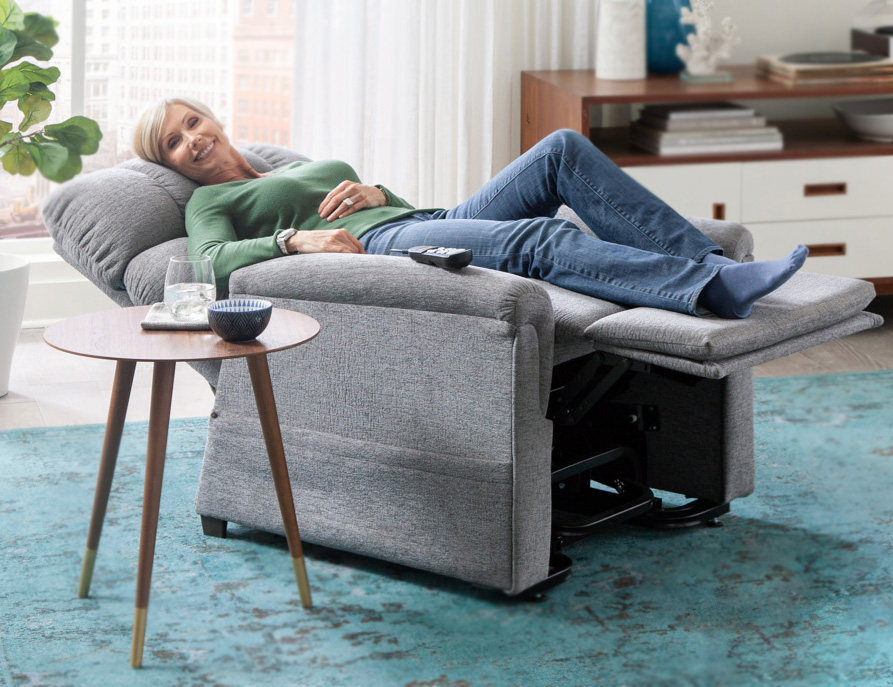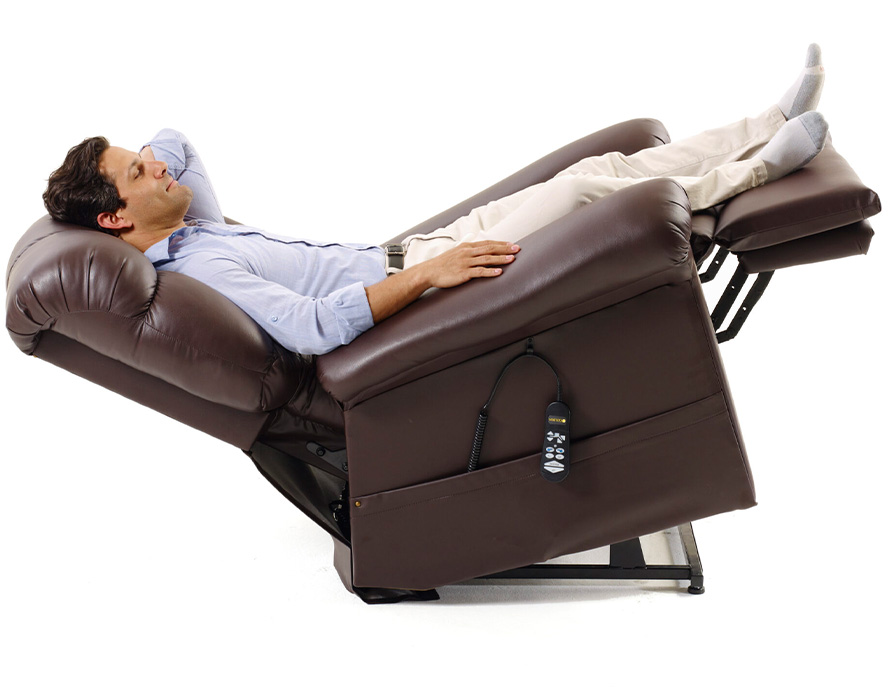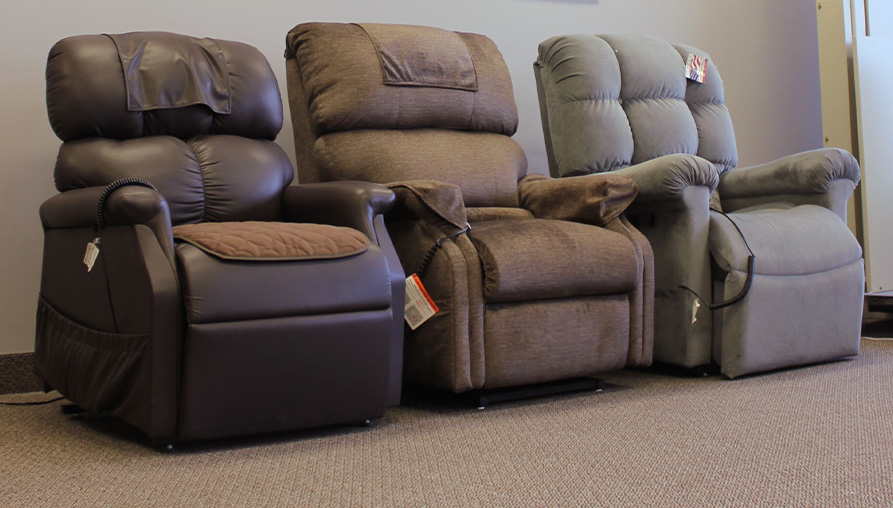All About Lift Chairs
What is a lift chair?
A lift chair is powered to mechanically help its user sit down and get up from a seated position safely. With the push of a button, the user can recline or be lifted to a position where it’s easier to comfortably stand up. Also called lift and recline chairs, they all recline but differ in the degree of recline offered. Some lift chairs offer recline positioning with therapeutic benefits.
What are the types of lift chairs?
Lift chairs are differentiated by the degree of recline they can reach, recline mechanism, and position of the footrest. There are three types of lift chairs: two-position, three-position, and infinite position. All types of lift chairs will lift the user to a position where their feet are on the floor and they can easily stand up.
Two-position lift chairs recline to a 45-degree angle so that the user is only leaning back slightly. For many, this is a comfortable position for reading and watching TV.
Three-position lift chairs can recline to an almost flat position and can stop at any degree of recline in between. The user’s body will be in a slight “V” at the hips with the backrest reclined and their knees and feet are higher than their hips. This is perfect for napping or for people who are not able to sleep lying flat in a bed. It is also possible to read and watch TV with a three-position lift chair.
Infinite position lift chairs (also known as zero-gravity or full recline) can recline into a flat position (where the backrest is parallel to the floor, and anywhere in between). Some models can lift a person’s feet above his/her head into therapeutic positions. The Trendelenburg position is where the user’s feet are positioned above their head to alleviate pressure on the lower back and improve circulation. The Zero Gravity position is where the head is slightly higher than the hips and the lower body (with a slight bend in the knees) is higher than the heart. This position relieves spinal pressure, muscle tension, and improves circulation.


How do lift chairs work?
Two- and three-position chairs are powered by one motor that controls the chair, recline, and footrest. When the backrest reclines, the footrest must extend; they cannot operate independently of each other. Two-position lift chairs do not require much space and are a great option if all you require is to watch TV and read.
Infinite position lift chairs usually have two motors that can work independently from each other. One motor will normally control the backrest and the other controls the footrest. This allows you to be in a seated position, with your legs extended in front.
What features do lift chairs have?
Most lift chairs have a hand control that requires constant pressure on the right side of the chair, near the armrests. Simple hand controls only have an up and a down button. If the “up” button is held down, the chair will go from recline to a seated position and eventually a lift position, where the user’s feet will be on the ground and the user can stand up from the chair.
Infinite position lift chairs often come with a programmable remote, allowing the chair to stop at a preferred position with the simple touch of a button. This is useful for users with dementia: the correct button can be painted so it is easy to tell which one to push. Additional options such as heat and massage are also controlled by the hand control. In case of power failure, many chairs offer a battery backup option so that the user can be safely lowered out of the chair.

Style-wise, lift chairs offer many different backrest options such as button back, pillow back and split back. The difference between the different backrest styles is mainly the look and what fits the décor of the home better. Button back (commonly seen in chairs and couches, where buttons are sewn into the backrest at regular intervals creating a depression) tends to be firmer and pillow back is usually the most plush. Most other backrest styles fall in between those two when it comes to plushness.

